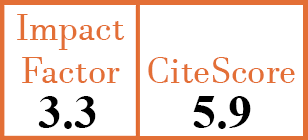Full Papers
Detecting novel micro RNAs in rheumatoid arthritis with gene-based association testing
A. Lenert1, D.W. Fardo2
- Department of Internal Medicine, Division of Rheumatology, University of Kentucky, Kentucky Clinic J507, Lexington, USA. ale259@uky.edu
- Department of Biostatistics, College of Public Health, University of Kentucky, Lexington, USA.
CER9969
2017 Vol.35, N°4
PI 0586, PF 0592
Full Papers
Free to view
(click on article PDF icon to read the article)
PMID: 28134081 [PubMed]
Received: 28/09/2016
Accepted : 14/12/2016
In Press: 27/01/2017
Published: 13/07/2017
Abstract
OBJECTIVES:
To identify novel risk genes by gene-based association analysis in rheumatoid arthritis (RA).
METHODS:
We performed gene-based association testing with GATES (Gene-based Association Test using Extended Simes procedure) to augment the power of genomewide-association study (GWAS) results from the largest meta-GWAS by Okada et al. in 14,361 RA cases and 43,923 controls of European ancestry using 8,694,488 SNPs.
RESULTS:
We identified 115 genes significantly associated with RA by gene-based association testing corresponding to 43 RA risk loci; 23 risk loci contained a single top risk gene, while 20 risk loci contained two or more risk genes. We replicated 39 of the genomewide significant risk loci identified by Okada et al. in Europeans with RA; we found identical top genes for 26 loci. Our gene-based testing identified 6 new top gene hits for each of the following 6 RA risk loci: RPP14 (for DNASE1L3-ABHD6-PXK), PXT1 (for ETV7), MIR5708 (for TPD52), DDX6 (for CXCR5), SUOX (for CDK2), and PCAT29 (for LOC145837). We also identified a potential novel RA risk locus (11q23.3, start position 118528941 bp) which contains the following 3 genes: TREH-PHLDB1-MIR6716; the locus was not identified previously but may be a proxy for CXCR5.
CONCLUSIONS:
Through novel comprehensive gene-based association testing in >50,000 Europeans with RA using ~8 million SNPs, we confirmed prior RA risk loci and identified novel risk genes including non-coding regulatory miRNAs, providing further insight into the complex genetics of RA.


